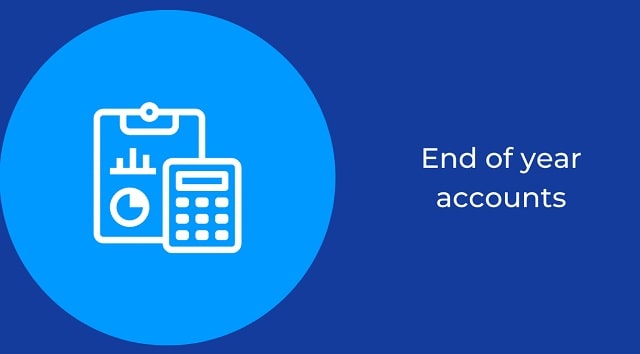
As we approach the year's end, it is that time again for small business proprietors to roll up their sleeves and venture into the realm of year-end accounting. The mention of fiscal reports might be a tad unsettling, but worry not! With an eleven step structured plan and a comprehensive guide, you can master your year-end accounts like a seasoned professional. In this all-encompassing blog piece, we aim to simplify the process for you, offering an accessible, informative, and, dare we say, somewhat enjoyable experience!
11 Steps To Master Small Business Year-End Accounts
Step 1: Gather All Financial Records
Before diving into the nitty-gritty, gather all your financial records. This includes sales receipts, expense invoices, bank statements, payroll information, and any other relevant financial documents. Arrange them in an organized manner, making sure nothing is overlooked or misplaced. It’s good to look at hiring accountants at this stage, so they can get a system in place for you that makes sense.
Step 2: Review And Reconcile Bank Statements
Take a deep breath and start by reviewing your bank statements. Look for any discrepancies, outstanding checks, or unusual transactions that need further investigation. Reconcile your bank accounts to ensure the balances match your records accurately. This step is vital for maintaining the integrity of your financial data.
Step 3: Analyse Income And Expenses
Now, let's move on to analyzing your income and expenses. Categorize your revenue and costs into various segments to gain a clearer picture of your business's financial health. Identify areas of overspending or cost-cutting opportunities to optimize your financial performance in the upcoming year.
Step 4: Check Inventory And Depreciation
If your business deals with inventory or assets, it is essential to assess their value accurately. Take a physical count of your inventory and update its value in your accounts. Additionally, review your fixed assets' depreciation to ensure that it aligns with their actual wear and tear.
Step 5: Account For Taxation
The mere mention of taxes can send chills down any business owner's spine. However, it is imperative to keep a tight rein on your tax responsibilities. Ensure all your tax reductions, credits, and allowances are properly documented. It might be worth considering professional counsel to guarantee adherence to the latest tax laws and to mitigate potential tax burdens.
Step 6: Evaluate Debt And Creditors
As a small business owner, managing debt is crucial to maintain a healthy financial position. Assess your outstanding loans and credit obligations. Ensure that the interest rates and terms are correctly reflected in your accounts. Negotiate with creditors if necessary to find better repayment terms that suit your financial situation.
Step 7: Review Employee Payroll And Benefits
Your team forms the backbone of your establishment, making it crucial to review their payroll and perks. Look out for any inconsistencies in their wages, overtime, bonuses, and benefits. This practice not only fulfils your legal duties as an employer but also promotes a positive work culture.
Step 8: Assess Cash Flow
Cash flow is the life force of any establishment. Scrutinize your cash flow statement to comprehend the monetary inflows and outflows over the year. Spot trends and patterns to brace for any cash flow hurdles that may crop up in the future. A robust cash flow is indispensable for ongoing business expansion.
Step 9: Reconcile Accounts Receivable And Payable
Maintaining a smooth cash flow also involves reconciling your accounts receivable and accounts payable. Ensure that all outstanding invoices are accurately recorded, and chase any overdue payments. On the other hand, review your payables and negotiate with suppliers if necessary to optimize your cash flow.
Step 10: Prepare Financial Statements
Having laid all the groundwork, it is time to compile your financial statements. Your year-end accounts will usually encompass an income statement, balance sheet, and cash flow statement. Ensure that these reports accurately depict your business's financial performance and standing for the year.
Step 11: Conduct A Year-End Financial Analysis
Now that your financial reports are in place, take a moment to carry out a detailed examination of your business's fiscal performance. Identify areas that need enhancement and areas where your business has excelled. This review will inform your strategic planning for the upcoming year.
Conclusion
Well done! You have successfully steered through the maze of year-end accounts for your small venture. Although it might have appeared intimidating at first, adhering to this step-by-step guide has made the task more digestible and even illuminating. Mastering your year-end accounts not only ensures compliance with fiscal regulations but also arms you with critical insights into your business's financial well-being.
Remember, you are not on this journey alone; never hesitate to seek expert advice when necessary. With the right strategy and a bit of financial acumen, your small enterprise is poised to thrive in the coming year!
